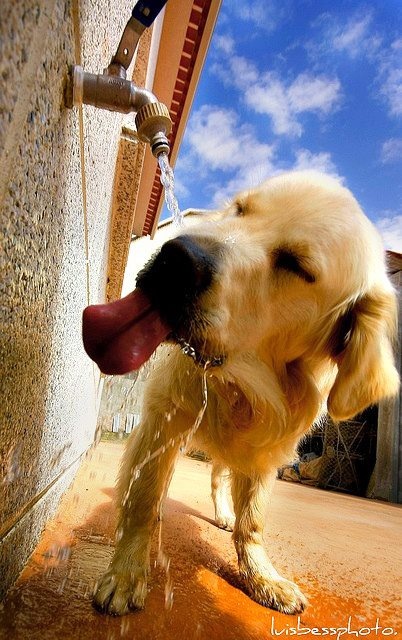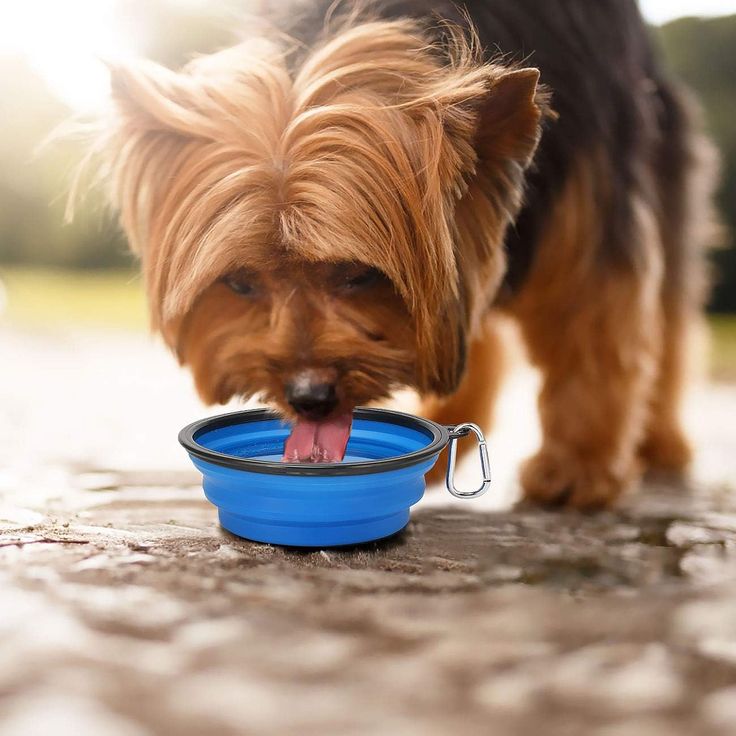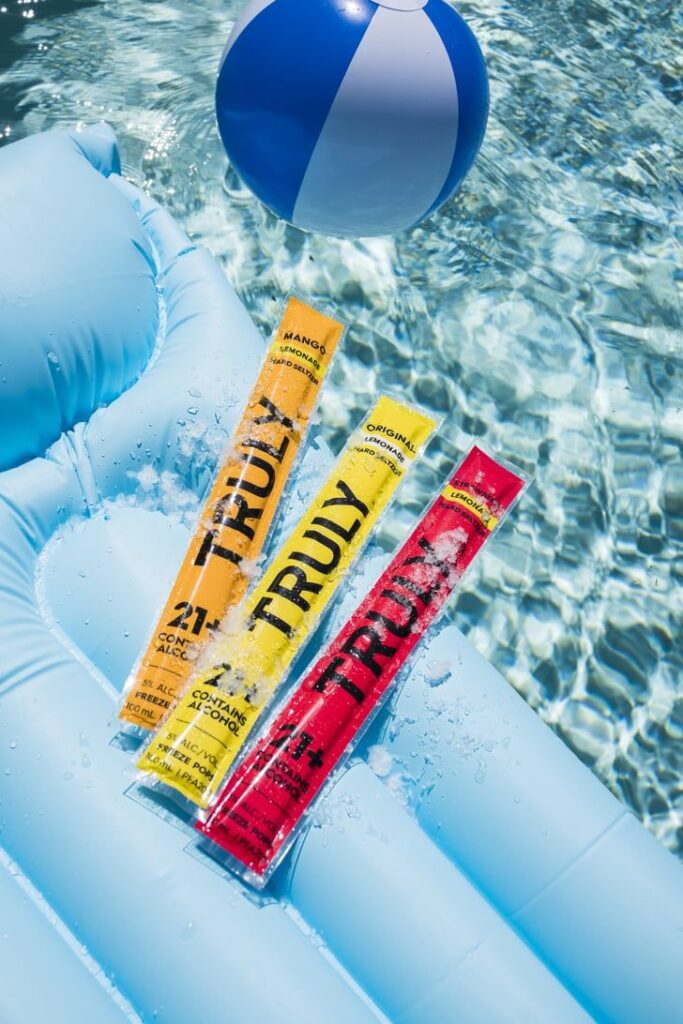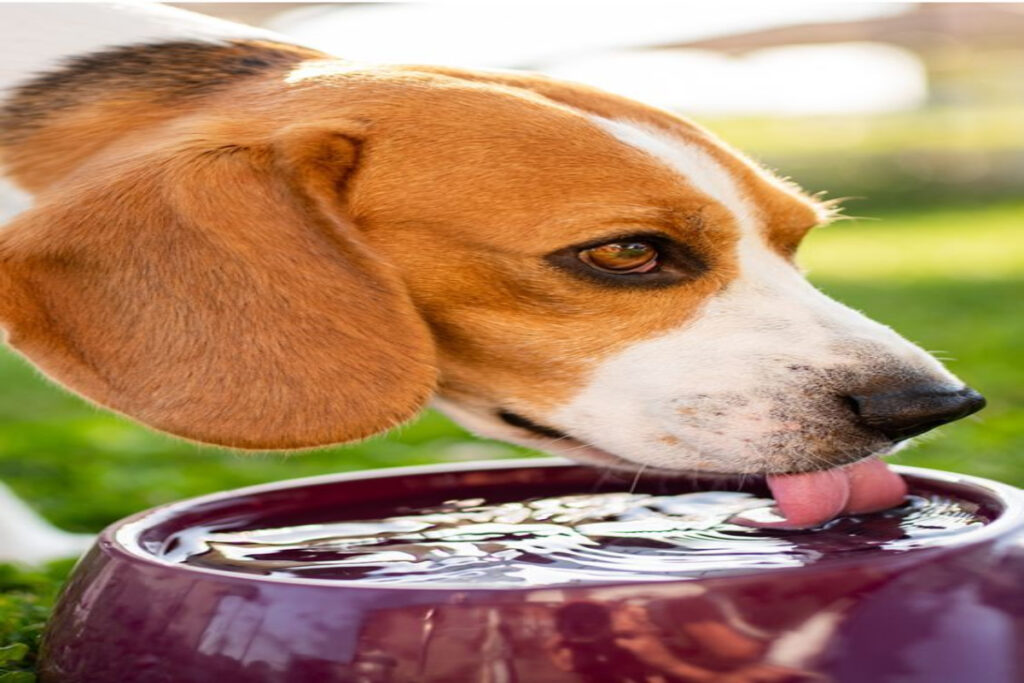When a viral tweet joked that the town’s drinking supply had become “dog water,” many pet parents found it funny. However, it also hit a nerve because pets, especially dogs, usually crowd around fountains, shared bowls, and public taps during summer, and we can’t blame them. Who does not want to stay cool during the summer heat?
Summer heat is no joke, especially for dogs. When the temperature rises, dogs naturally seek the nearest water source to stay calm and hydrated. Whether it is a puddle, a public fountain, or that public dog bowl that is always present at the park, it can feel like your dog is on a mission to lap water from any and every questionable water source they can find.
However, as cute and thirsty as they may be, and as much as we all love happy, hydrated dogs, public water sources can raise serious hygiene concerns for animals and people. Shared water sources like the ever-present public bowls, park fountains, and even the hoses in your backyard can seem convenient to keep your dog hydrated during warmer months, but let’s think of hygiene.

Have you stopped to wonder how clean those water spots are? That innocent-looking bowl or fountain may not be as safe as it seems; it might be home to bacteria, parasites, chemicals, and toxins. Are they safe for pets? The term “dog water” might be a meme, but unclean hydration is not a joke; the risks are very real. Shared water areas can turn into unexpected health hazards.
However, you do not have to choose between hydration and hygiene; there is a solution. You can use a few quick and practical hygiene hacks to protect your furry friends and help keep public water safe for everyone. Whether at home or out for a walk, these hacks can help ensure you do not need to stress or stop your pets from staying cool during the summer.
4 Quick Hygiene Hacks for Shared Water Sources
The following are four quick and easy hygiene hacks for shared water sources:
1. Build a DIY Backyard Cooling Station
Why risk public fountains when you can make a dog-friendly splash zone at home? If you have a backyard, patio, or even a balcony, you can turn it into a dog-friendly hydration zone for just a few dollars and a bit of creativity. Creating a cooling station at home is not just fun; it is a highly effective method for reducing your dog’s need to drink from risky public water sources.
The following are what you will need to create that space:
- A shaded area to prevent overheating.
- A plastic kiddie pool. If you do not already have this, you can easily find one at a store or supermarket.
- A sprinkler or a garden hose with a mist attachment.
DIY Process: Fill the kiddie pool with clean water and place it in a shady corner of your backyard, patio, or balcony. Set up the sprinkler nearby so your dog can play and cool off whenever needed. This will give your pet constant access to fresh water to splash in, play in, or drink from.
This particular hack will work effectively because dogs cool off through panting and the pads of their feet. The shallow pool will allow them to regulate their body temperature while staying hydrated.
To ensure your pet has constant access to clean water, refill the water daily and rinse the pool regularly. This will also help prevent bacteria or mold from forming.
2. Carry a Collapsible Travel Bowl
Many dog owners heavily rely on park fountains or shared bowls that are usually provided by dog-friendly cafés or businesses. While these can be very convenient, they are also hotspots for germs, especially when multiple dogs use the water source throughout the day.
These shared sources can be home to bacteria like E. coli or viruses and parasites like Giardia. An easy yet most overlooked way to avoid these public water germs is to simply carry your own pet bowl. It is a cheap hack with high-impact benefits.
As a dog parent, using your own water source, like a collapsible travel bowl, can be a lot safer when walking your dog or taking a trip to the park. These bowls are typically made of silicone or nylon. They are usually lightweight and can be folded flatly, which makes them easy to carry.
You can toss it into a backpack, purse, or even your back pocket. Carry it with your reusable water bottle, and you have a safe hydration station you can carry wherever you go. Once you get into the habit of using your own bowl, you will never want to go back to shared drinking spots again.

Tips for Choosing the Right Bowl
- Look for BPA-free materials
- Go for bowls that are dishwasher-safe for easy cleaning
- Choose bowls with a carabiner clip so that you can attach them to a leash or bag.
3. Safely Disinfect Public Fountains
There might be times when you will forget the travel bowl, or your dog might suddenly rush towards a water fountain before you can stop them. When that happens, the best thing you can do is to be prepared. You can carry your disinfectant and use it in the dog fountain.
Disinfection matters because public water sources can be breeding grounds for harmful bacteria and viruses. These water sources see dozens of tongues, paws, and snouts daily. Unlike human fountains, they are usually not cleaned or maintained as much as they should be. This shows that quick disinfection can make a big difference.
What to Carry Along
- A small spray bottle
- A pet-safe sanitizer. You can either make your own pet-safe sanitizer with a 1:1 mix of white vinegar and water or use a vet-recommended commercial cleaner.
- Paper towels or a clean cloth.
Before letting your dog drink, quickly spritz and wipe the rim and nozzle. This usually takes less than 30 seconds, but it can significantly reduce the risk of spreading harmful microorganisms. You should never use harsh household disinfectants like bleach or hydrogen peroxide directly on surfaces your pets will lick. These can be toxic to pets, especially if residue remains on the surface.
4. Make Use of Vet-Approved Electrolytes Ice Pops
Who says hydration has to be boring? Dogs need more than just water when it is too hot for comfort. They need electrolytes, especially if they are active. Electrolyte ice pops are a fun, cooling way to keep your pets healthy and hydrated.
Why electrolytes? Just like human beings, dogs lose electrolytes through panting, urination, and sweating through their paw pads. When the heat is intense or during their physical activities, they may need more than just water to stay balanced.
Electrolyte imbalances can lead to fatigue, vomiting, and, in severe cases, dehydration or heatstroke. These frozen treats can come in handy, and they are safe, simple to make, and can even become a regular part of your summer routine.
To make them, you will need the following:
- 1 cup of low-sodium chicken or beef broth
- ½ cup of water
- 1 scoop of pet-safe, vet-approved electrolyte supplement
- Although it is optional, you can add a few dog-safe fruits like blueberries or watermelon chunks

DIY Process: Pour the mixture into silicone ice cube trays or molds and freeze it overnight; that’s all! They can be served as treats after walks, playtime, or on hot days when your dog seems lethargic. However, there are some things you should know;
- Avoid sweeteners like xylitol; they are toxic to dogs.
- Avoid store-bought electrolyte drinks made for humans. These drinks often contain caffeine, sugar, or artificial flavors, which can harm your pet.
- Don’t use bones or raw meat in the mixture because freezing will not kill the harmful bacteria that might be present in them.
Conclusion: Clean Water, Healthy Dogs
Keeping your pet cool and hydrated does not mean you should compromise on hygiene. Even though shared drinking supplies are convenient, they often come with hidden risks. By using these four easy hacks, you are taking a big step toward protecting your pet’s health.
